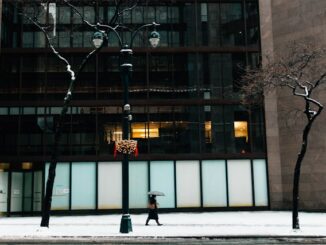
Trip and fall accidents in Ontario can happen anywhere – uneven sidewalks, cluttered hallways, or poorly maintained stairs. Regardless of the location, the aftermath often leaves the victim feeling disoriented and potentially injured. However, amidst the initial shock, one crucial step can significantly impact your ability to pursue compensation: collecting witness information.
This article explores the importance of securing witness testimony after a trip and fall accident in Ontario and provides actionable steps to navigate the process effectively.
Why Witness Accounts Matter
In a trip and fall case, the burden of proof lies with you, the injured party. You need to establish that the property owner or occupier was negligent in maintaining a safe environment, and that their negligence caused your fall and subsequent injuries.
Here’s where witness testimony becomes invaluable:
- Verifying the Hazard: Witnesses can confirm the existence of the trip hazard (uneven pavement, loose carpet edge, etc.) that caused your fall. Their account strengthens your claim against the property owner.
- Building a Timeline: Witness observations can help establish the sequence of events leading to your fall. This can be crucial in situations where the property owner claims you were distracted or not paying attention.
- Documenting the Scene: Ideally, witnesses can describe the condition of the area where you fell, including any potential warning signs or lack thereof. This information can be vital evidence.
Gathering Witness Information on the Spot
The ideal scenario is to collect witness information immediately after the accident. Here’s how to approach this sensitive situation:
- Safety First: Adrenaline can mask the severity of your injuries. Seek medical attention immediately if needed. Delay collecting witness information if your well-being is compromised.
- Identify Potential Witnesses: Look around for anyone who might have observed your fall. This could include bystanders, security personnel in buildings, or fellow pedestrians on sidewalks.
- Calm and Polite Approach: Introduce yourself and briefly explain what happened. Briefly describe the trip hazard and your fall.
- Request Contact Details: Ask the witness if they’d be willing to provide their name, phone number, and email address. Explain that their testimony could be valuable in establishing the cause of your accident.
- Respect Their Time: Understand that witnesses might be in a hurry. Keep the interaction concise and focus on collecting their contact details.
Enhancing Your Witness Information Collection
Here are some additional tips to optimize your witness information gathering:
- Take Notes: While collecting contact details, jot down a few key observations from the witness. Did they see the hazard beforehand? Did anyone else seem to have trouble with it?
- Request Specific Details: If the witness seems receptive, ask clarifying questions. For instance, inquire about lighting conditions, the presence of warning signs, or if the hazard seemed recent or longstanding.
- Capture the Scene: If possible, take photos or videos of the area where you fell, focusing on the trip hazard and any surrounding factors. This can serve as supporting evidence alongside witness testimony.
Following Up with Witnesses
Once you’ve collected witness information, it’s crucial to follow up promptly. Here’s how to maintain communication:
- Express Gratitude: Thank the witness for their time and willingness to potentially provide a statement.
- Confirm Contact Details: Double-check the contact details you collected to ensure accuracy.
- Prepare a Witness Statement Request (Optional): If you have a lawyer, they might suggest sending a formal statement request to the witness, outlining the details of the accident and requesting a written account.
- Stay in Touch (Briefly): While you shouldn’t pester the witness, a polite follow-up call or email can be helpful, especially if a significant amount of time has passed before needing their statement.
When to Involve a Personal Injury Lawyer
Trip and fall accidents can result in unexpected medical bills and lost wages. Navigating the legal complexities of a personal injury claim often necessitates the expertise of a qualified lawyer in Ontario. Here are some scenarios where involving a lawyer is highly recommended:
- Serious Injuries: If your injuries are severe and require extensive medical treatment, a lawyer can guide you through the legal process and ensure your rights are protected.
- Liability Disputes: If the property owner denies responsibility for the hazard or the cause of the trip and fall is contested, a lawyer can fight your case and hold them accountable.
- Insurance Involvement: If insurance companies are involved, a lawyer can represent your best interests and negotiate a fair settlement.
A personal injury lawyer can effectively collect witness statements, analyze their accounts, and build a strong case to maximize your compensation for medical expenses, lost income, and pain and suffering.
By following these steps and understanding the value of witness testimony, you can increase your chances of a successful outcome



